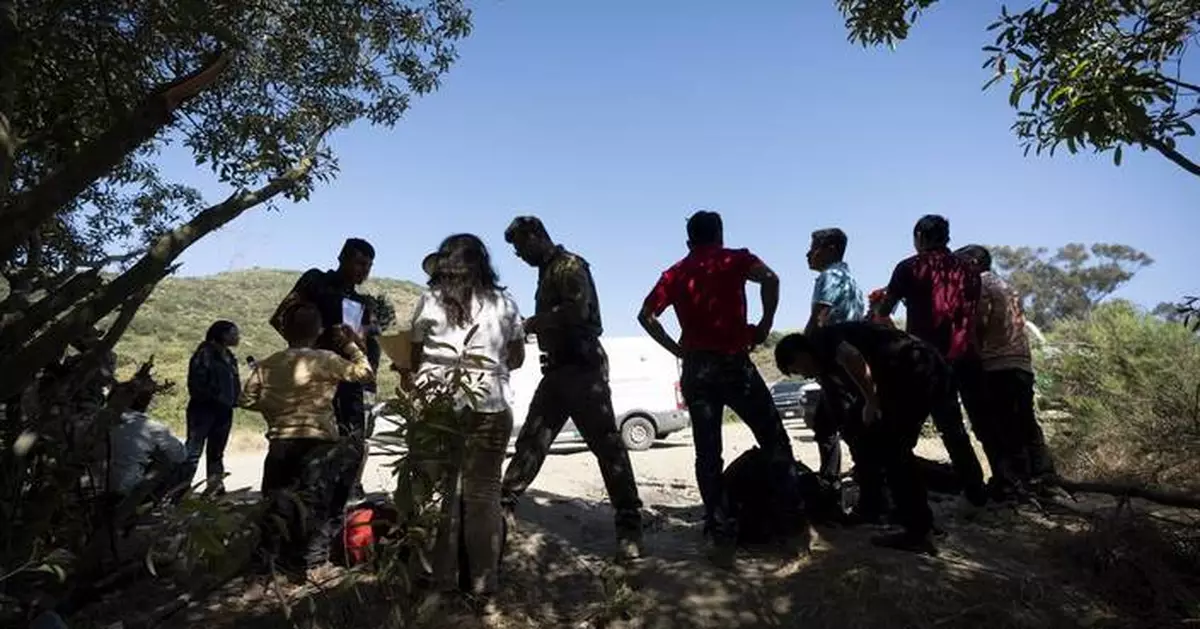President-elect Donald Trump will return to power next year with a raft of technological tools at his disposal that would help deliver his campaign promise of cracking down on immigration — among them, surveillance and artificial intelligence technology that the Biden administration already uses to help make crucial decisions in tracking, detaining and ultimately deporting immigrants lacking permanent legal status.
While immigration officials have used the tech for years, an October letter from the Department of Homeland Security obtained exclusively by The Associated Press details how those tools — some of them powered by AI — help make life-altering decisions for immigrants, including whether they should be detained or surveilled.
One algorithm, for example, ranks immigrants with a “Hurricane Score,” ranging from 1-5, to assess whether someone will “abscond” from the agency's supervision.
The letter, sent by DHS Chief Artificial Intelligence Officer Eric Hysen to the immigrant rights group Just Futures Law, revealed that the score calculates the potential risk that an immigrant — with a pending case — will fail to check in with Immigration and Customs Enforcement officers. The algorithm relies on several factors, he said, including an immigrant’s number of violations and length of time in the program, and whether the person has a travel document. Hysen wrote that ICE officers consider the score, among other information, when making decisions about an immigrant’s case.
“The Hurricane Score does not make decisions on detention, deportation, or surveillance; instead, it is used to inform human decision-making,” Hysen wrote.
Also included in the government’s tool kit is a mobile app called SmartLINK that uses facial matching and can track an immigrant’s specific location.
Nearly 200,000 people without legal status who are in removal proceedings are enrolled in the Alternatives to Detention program, under which certain immigrants can live in the U.S. while their immigration cases are pending.
In exchange, SmartLINK and GPS trackers used by ICE rigorously surveil them and their movements. The phone application draws on facial matching technology and geolocation data, which has been used before to find and arrest those using the app.
Just Futures Law wrote to Hysen earlier this year, questioning the fairness of using an algorithm to assess whether someone is a flight risk and raising concerns over how much data SmartLINK collects. Such AI systems, which score or screen people, are used widely but remain largely unregulated even though some have been found to discriminate on race, gender or other protected traits.
DHS said in an email that it is committed to ensuring that its use of AI is transparent and safeguards privacy and civil rights while avoiding biases. The agency said it is working to implement the Biden administration’s requirements on using AI, but Hysen said in his letter that security officials may waive those requirements for certain uses. Trump has publicly vowed to repeal Biden's AI policy when he returns to the White House in January.
“DHS uses AI to assist our personnel in their work, but DHS does not use the outputs of AI systems as the sole basis for any law enforcement action or denial of benefits,” a spokesperson for DHS told the AP.
Trump has not revealed how he plans to carry out his promised deportation of an estimated 11 million people living in the country illegally. Although he has proposed invoking wartime powers, as well as military involvement, the plan would face major logistical challenges — such as where to keep those who have been detained and how to find people spread across the country — that AI-powered surveillance tools could potentially address.
Karoline Leavitt, a spokesperson for Trump, did not answer questions about how they plan to use DHS’ tech, but said in a statement that “President Trump will marshal every federal and state power necessary to institute the largest deportation operation” in American history.
Over 100 civil society groups sent a letter on Friday urging the Office of Management and Budget to require DHS to comply with the Biden administration’s guidelines. OMB did not immediately respond to a request for comment.
Just Futures Law’s executive director, Paromita Shah, said if immigrants are scored as flight risks, they are more likely to remain in detention, "limiting their ability to prepare a defense in their case in immigration court, which is already difficult enough as it is.”
SmartLINK, part of the Intensive Supervision Appearance Program, is run by BI Inc., a subsidiary of the private prison company The GEO Group. The GEO Group also contracts with ICE to run detention centers.
ICE is tight-lipped about how it uses SmartLINK’s location feature to find and arrest immigrants. Still, public records show that during Trump’s first term in 2018, Manassas, Virginia-based employees of BI Inc. relayed immigrants’ GPS locations to federal authorities, who then arrested over 40 people.
In a report last year to address privacy issues and concerns, DHS said that the mobile app includes security features that “prohibit access to information on the participant’s mobile device, with the exception of location data points when the app is open.”
But the report notes that there remains a risk that data collected from people "may be misused for unauthorized persistent monitoring.”
Such information could also be stored in other ICE and DHS databases and used for other DHS mission purposes, the report said.
On investor calls earlier this month, private prison companies were clear-eyed about the opportunities ahead.
The GEO Group’s executive chairman George Christopher Zoley said that he expects the incoming Trump administration to “take a much more aggressive approach regarding border security as well as interior enforcement and to request additional funding from Congress to achieve these goals.”
“In GEO’s ISAP program, we can scale up from the present 182,500 participants to several hundreds of thousands, or even millions of participants,” Zoley said.
That same day, the head of another private prison company told investors he would be watching closely to see how the new administration may change immigrant monitoring programs.
“It’s an opportunity for multiple vendors to engage ICE about the program going forward and think about creative and innovative solutions to not only get better outcomes, but also scale up the program as necessary,” Damon Hininger, CEO of the private prison company CoreCivic Inc. said on an earnings call.
GEO did not respond to requests for comment. In a statement, CoreCivic said that it has played “a valued but limited role in America’s immigration system” for both Democrats and Republicans for over 40 years.

FILE - Chinese migrants wait to be processed after crossing the border with Mexico May 8, 2024, near Jacumba Hot Springs, Calif. (AP Photo/Ryan Sun, File)
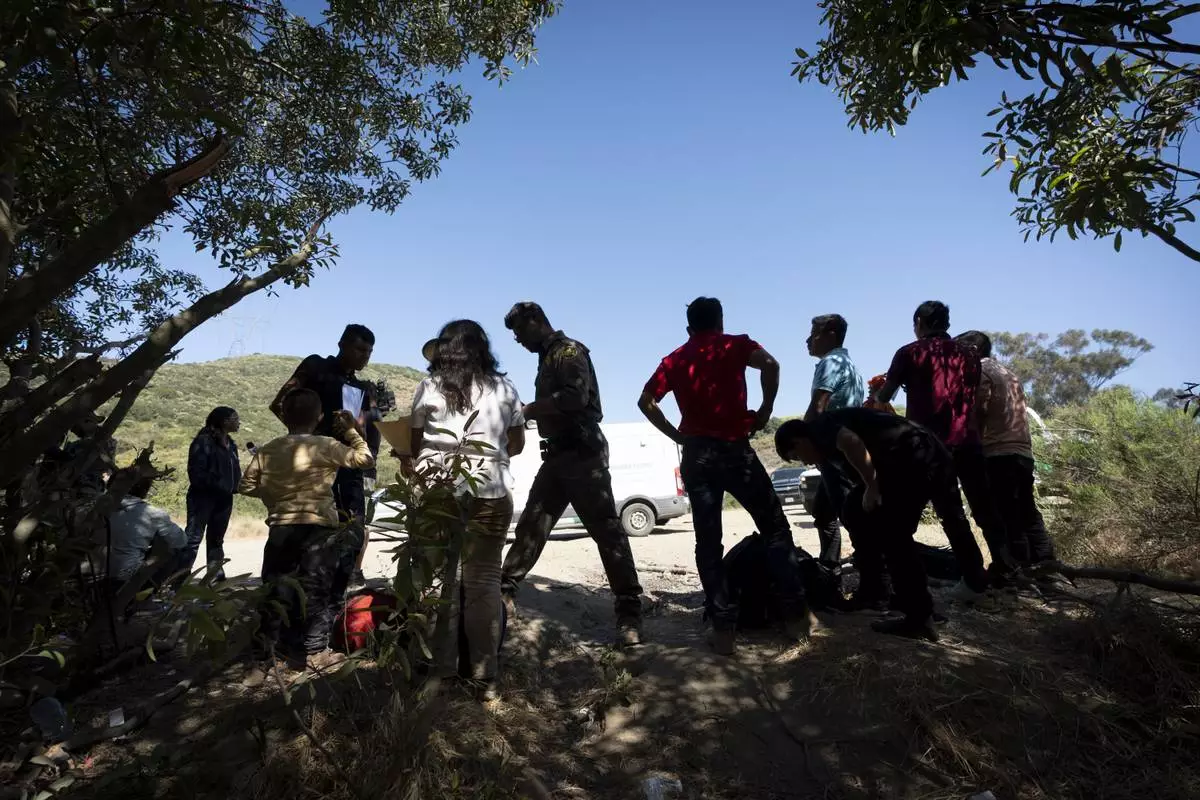
FILE - Border Patrol agents talk with migrants seeking asylum as they prepare them for transportation to be processed, June 5, 2024, near Dulzura, Calif. (AP Photo/Gregory Bull, File)
JERUSALEM (AP) — Israeli Prime Minister Benjamin Netanyahu on Tuesday recommended his Cabinet approve a United States-brokered ceasefire agreement with Lebanon's Hezbollah, setting the stage for an end to nearly 14 months of fighting linked to the ongoing war in the Gaza Strip.
Israel stepped up its bombardment of Lebanon in the hours leading up to the Cabinet meeting, killing at least 23 people, according to local authorities. The military also issued a flurry of evacuation warnings — a sign it aims to keep pummeling Hezbollah in the final hours before any ceasefire takes hold.
In a televised statement, Netanyahu said he would present the ceasefire proposal to Cabinet ministers later Tuesday, when they are expected to vote on it. He listed a series of accomplishments against Israel’s enemies across the region in recent months. He said a ceasefire with Hezbollah would further isolate Hamas in Gaza and would allow Israel to turn its focus to Iran — Hezbollah's backer and Israel's biggest threat in the region. He vowed to strike Hezbollah hard if it violates the agreement.
“If Hezbollah breaks the agreement and tries to rearm, we will attack,” he said. “For every violation, we will attack with might.”
It was not immediately clear when the ceasefire would go into effect, and the exact terms of the deal were not released. The deal does not affect Israel’s war against Hamas in Gaza, which shows no signs of ending.
Lebanese officials have said Hezbollah also supports the deal. If approved by all sides, the deal would be a major step toward ending the Israel-Hezbollah war that has inflamed tensions across the region and raised fears of an even wider conflict between Israel and Hezbollah's patron, Iran.
The deal calls for a two-month initial halt in fighting and would require Hezbollah to end its armed presence in a broad swath of southern Lebanon, while Israeli troops would return to their side of the border. Thousands of Lebanese troopsand U.N. peacekeepers would deploy in the south, and an international panel headed by the United States would monitor all sides’ compliance.
But implementation remains a major question mark. Israel has demanded the right to act should Hezbollah violate its obligations. Lebanese officials have rejected writing that into the proposal. Israel's Defense Minister Israel Katz insisted on Tuesday that the military would strike Hezbollah if the U.N. peacekeeping force, known as UNIFIL, doesn’t provide “effective enforcement” of the deal.
Even as Israeli, U.S, Lebanese and international officials have expressed growing optimism over a ceasefire, Israel has continued its campaign in Lebanon, which it says aims to cripple Hezbollah’s military capabilities.
An Israeli strike on Tuesday leveled a residential building in the central Beirut district of Basta — the second time in recent days warplanes have hit the crowded area near the city’s downtown. At least seven people were killed and 37 wounded, according to Lebanon's Health Ministry.
Three people were killed in a separate strike in Beirut and three in a strike on a Palestinian refugee camp in southern Lebanon. Lebanese state media said another 10 people were killed in the eastern Baalbek province. Israel says it targets Hezbollah fighters and their infrastructure.
The evacuation warnings covered many areas, including parts of Beirut that previously have not been targeted. The warnings, coupled with fear that Israel was ratcheting up attacks before a ceasefire, sent residents fleeing. Traffic was gridlocked, and some cars had mattresses tied to them. Dozens of people, some wearing their pajamas, gathered in a central square, huddling under blankets or standing around fires as Israeli drones buzzed loudly overhead.
Hezbollah, meanwhile, kept up its rocket fire, triggering air raid sirens across northern Israel.
Israeli military spokesman Avichay Adraee issued evacuation warnings for 20 buildings in Beirut's southern suburbs, where Hezbollah has a major presence, as well as a warning for the southern town of Naqoura where UNIFIL is headquartered.
UNIFIL spokesperson Andrea Tenenti told The Associated Press that peacekeepers will not evacuate.
Other strikes hit in the southern city of Tyre, where the Israeli military said it killed a local Hezbollah commander.
The Israeli military also said its ground troops clashed with Hezbollah forces and destroyed rocket launchers in the Slouqi area on the eastern end of the Litani River, a few kilometers (miles) from the Israeli border.
Under the ceasefire deal, Hezbollah would be required to move its forces north of the Litani, which in some places is about 30 kilometers (20 miles) north of the border.
A ceasefire between Israel and Hezbollah, the strongest Iranian-backed force in the region, would likely significantly calm regional tensions that have led to fears of a direct, all-out war between Israel and Iran. It’s not clear how the ceasefire will affect the Israel-Hamas war in Gaza. Hezbollah had long insisted that it would not agree to a ceasefire until the war in Gaza ends, but it dropped that condition.
Hezbollah began firing into northern Israel, saying it was showing support for the Palestinians, a day after Hamas carried out its Oct. 7, 2023, attack on southern Israel, triggering the Gaza war. Israel returned fire on Hezbollah, and the two sides have been exchanging barrages ever since.
Israel escalated its campaign of bombardment in mid-September and later sent troops into Lebanon, vowing to put an end to Hezbollah fire so tens of thousands of evacuated Israelis could return to their homes.
More than 3,760 people have been killed by Israeli fire in Lebanon the past 13 months, many of them civilians, according to Lebanese health officials. The bombardment has driven 1.2 million people from their homes. Israel says it has killed more than 2,000 Hezbollah members.
Hezbollah fire has forced some 50,000 Israelis to evacuate in the country’s north, and its rockets have reached as far south in Israel as Tel Aviv. At least 75 people have been killed, more than half of them civilians. More than 50 Israeli soldiers have died in the ground offensive in Lebanon.
After previous hopes for a ceasefire were dashed, U.S. officials cautioned that negotiations were not yet complete and noted there could be last-minute hitches that delay or destroy an agreement.
“Nothing is done until everything is done,” White House national security spokesman John Kirby said.
While the ceasefire proposal is expected to be approved if Netanyahu brings it to a vote in his security Cabinet, one hard-line member, National Security Minister Itamar Ben-Gvir, said he would oppose it. He said on X that a deal with Lebanon would be a “big mistake” and a “missed historic opportunity to eradicate Hezbollah.”
Chehayeb and Mroue reported from Beirut. Associated Press reporters Lujain Jo and Sally Abou AlJoud in Beirut contributed.
Find more of AP’s war coverage at https://apnews.com/hub/israel-hamas-war
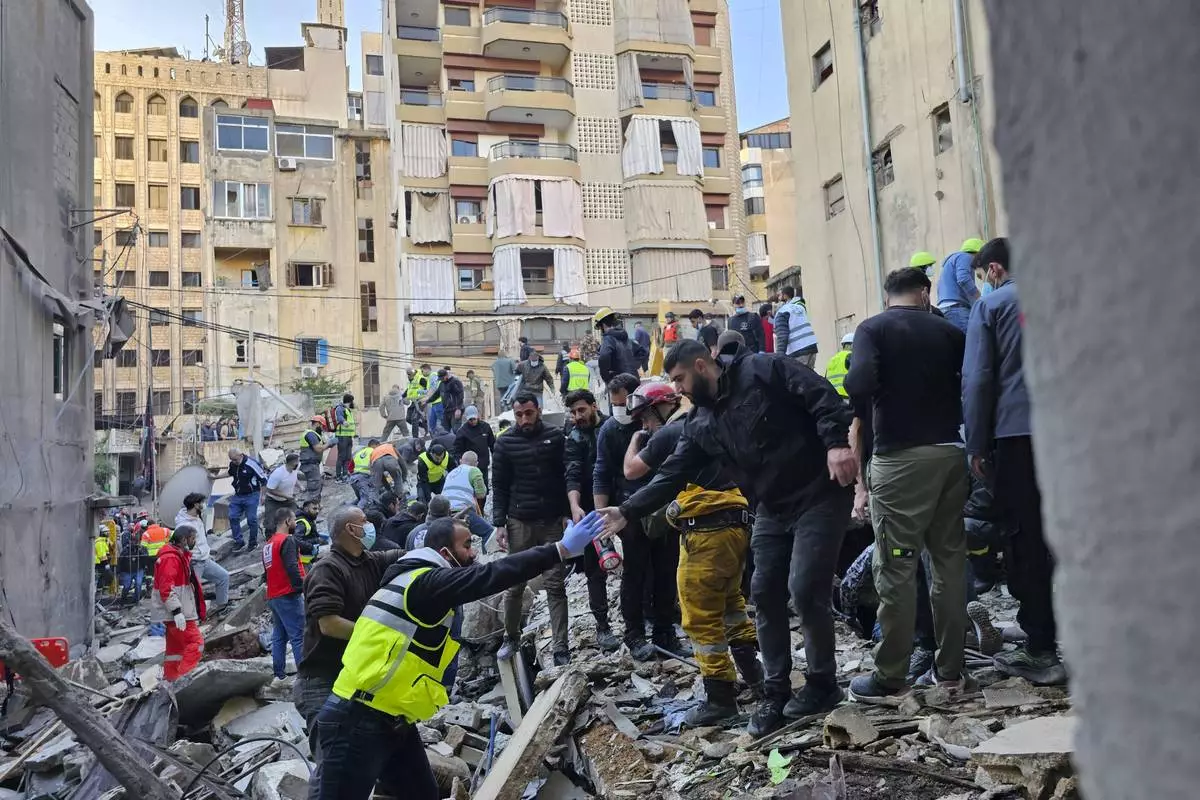
Rescuers search for victims at the site of an Israeli airstrike that targeted a building in Beirut, Lebanon, Tuesday, Nov. 26, 2024. (AP Photo/Hassan Ammar)
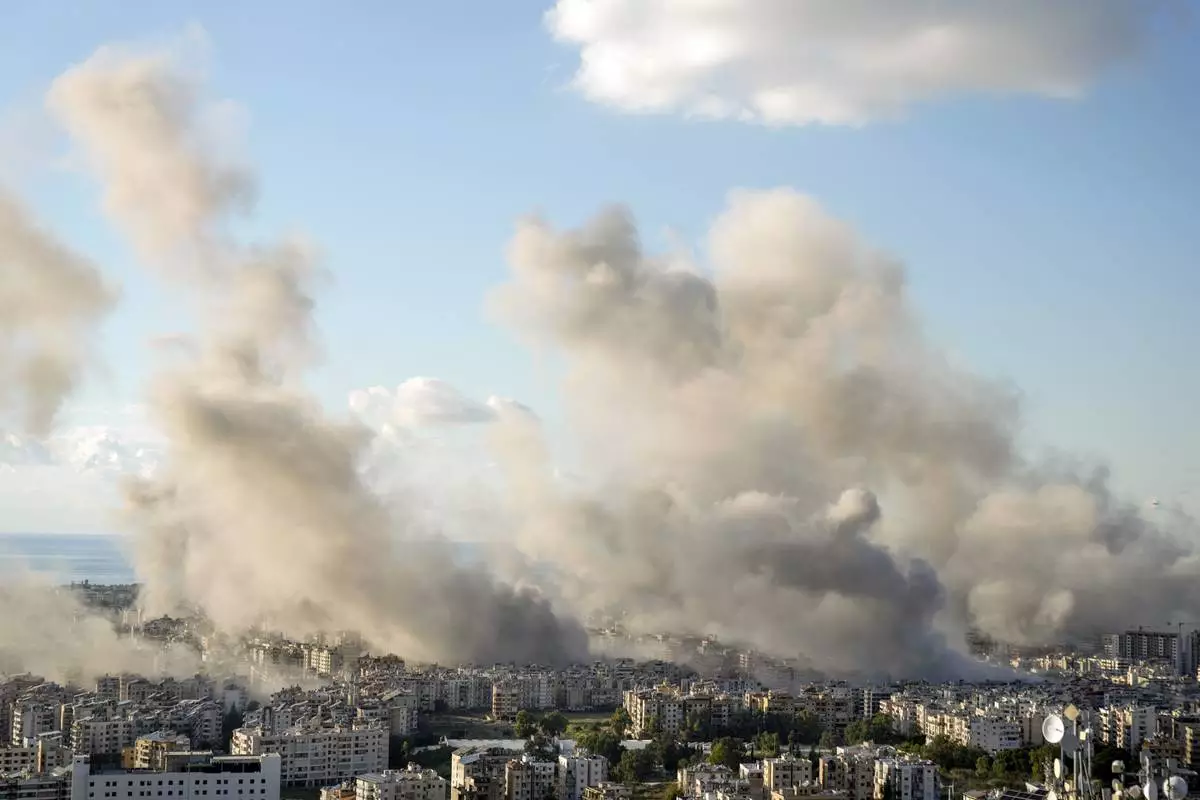
Smoke rises following an Israeli airstrike on Dahiyeh, in Beirut, Lebanon, Tuesday, Nov. 26, 2024. (AP Photo/Bilal Hussein)

Rescuers search for victims at the site of an Israeli airstrike that targeted a building in Beirut, Lebanon, Tuesday, Nov. 26, 2024. (AP Photo/Hassan Ammar)

Journalists watch the smoke rising between buildings hit in Israeli airstrikes near the Palestinian refugee camp of Rashidiyeh, as it seen from Tyre city, south Lebanon, Tuesday, Nov. 26, 2024. (AP Photo/Hussein Malla)
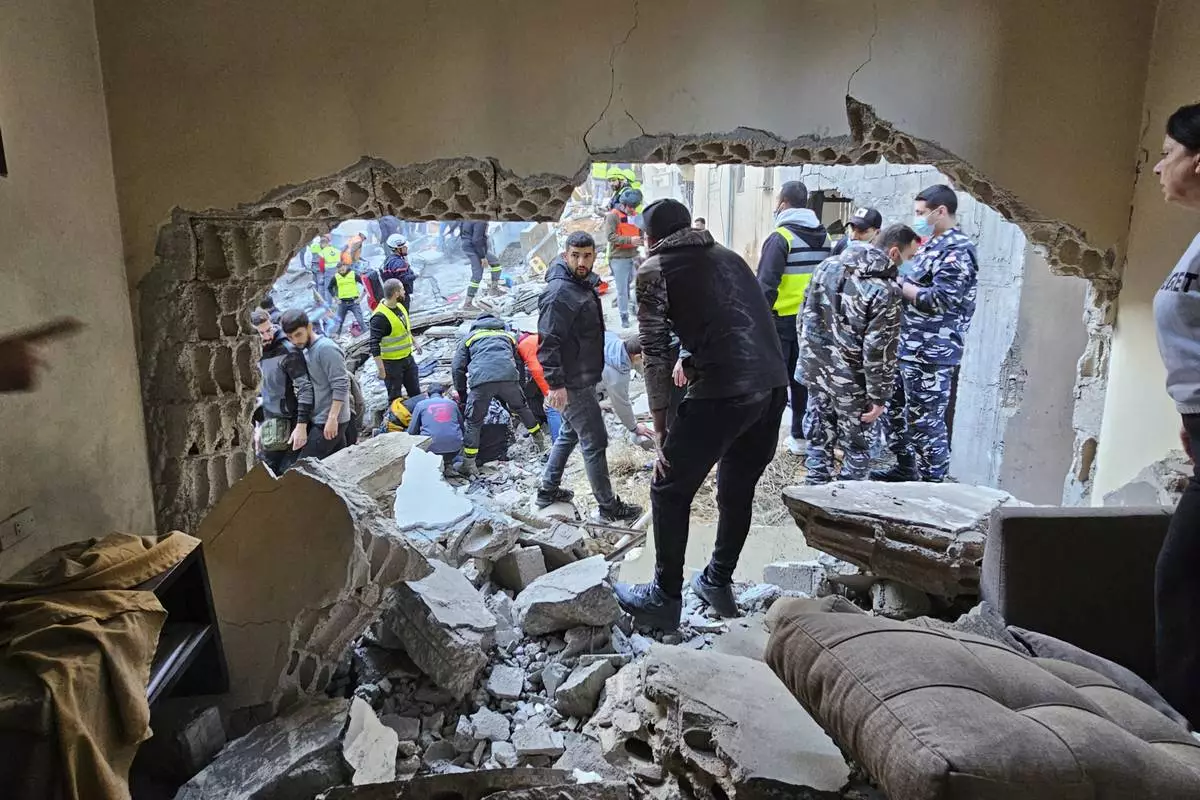
Rescuers and residents search for victims at the site of an Israeli airstrike that targeted a building in Beirut, Lebanon, Tuesday, Nov. 26, 2024. (AP Photo/Hassan Ammar)
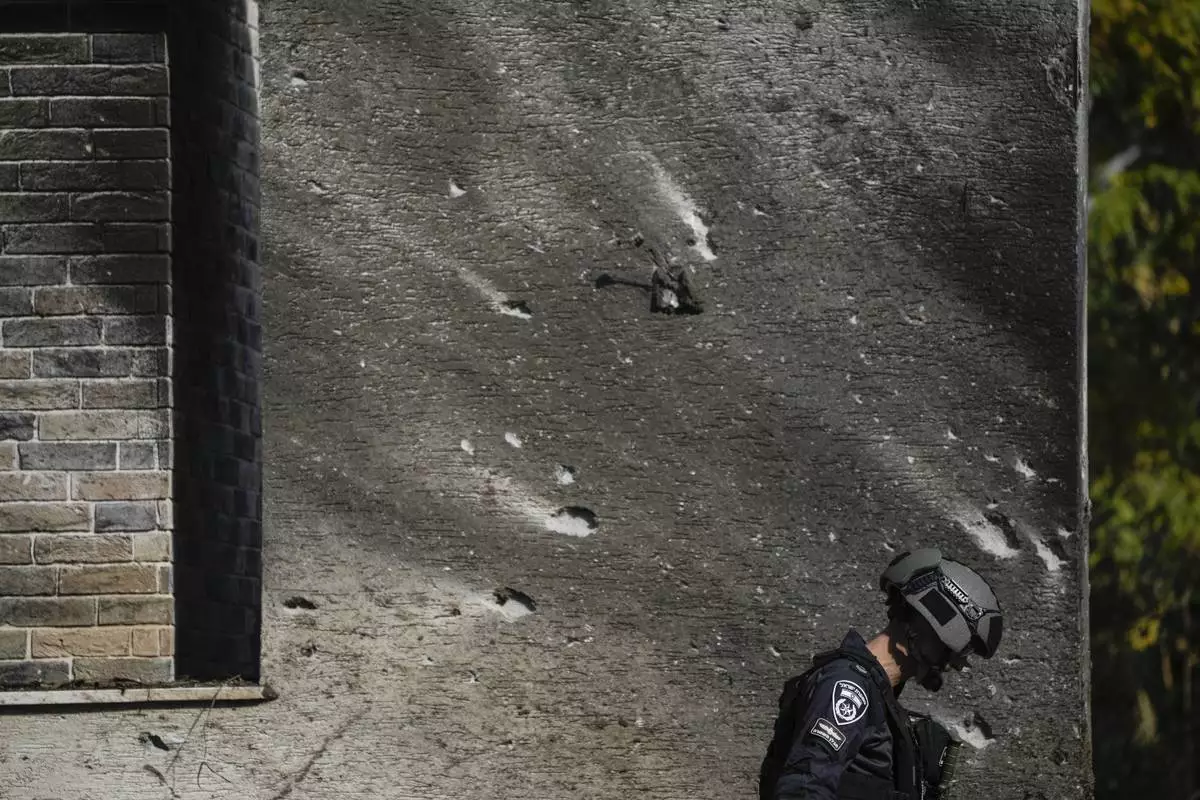
A police bomb squad officer inspects the site where a rocket fired from Lebanon landed in a backyard in Kiryat Shmona, northern Israel, Tuesday Nov. 26, 2024. (AP Photo/Leo Correa)
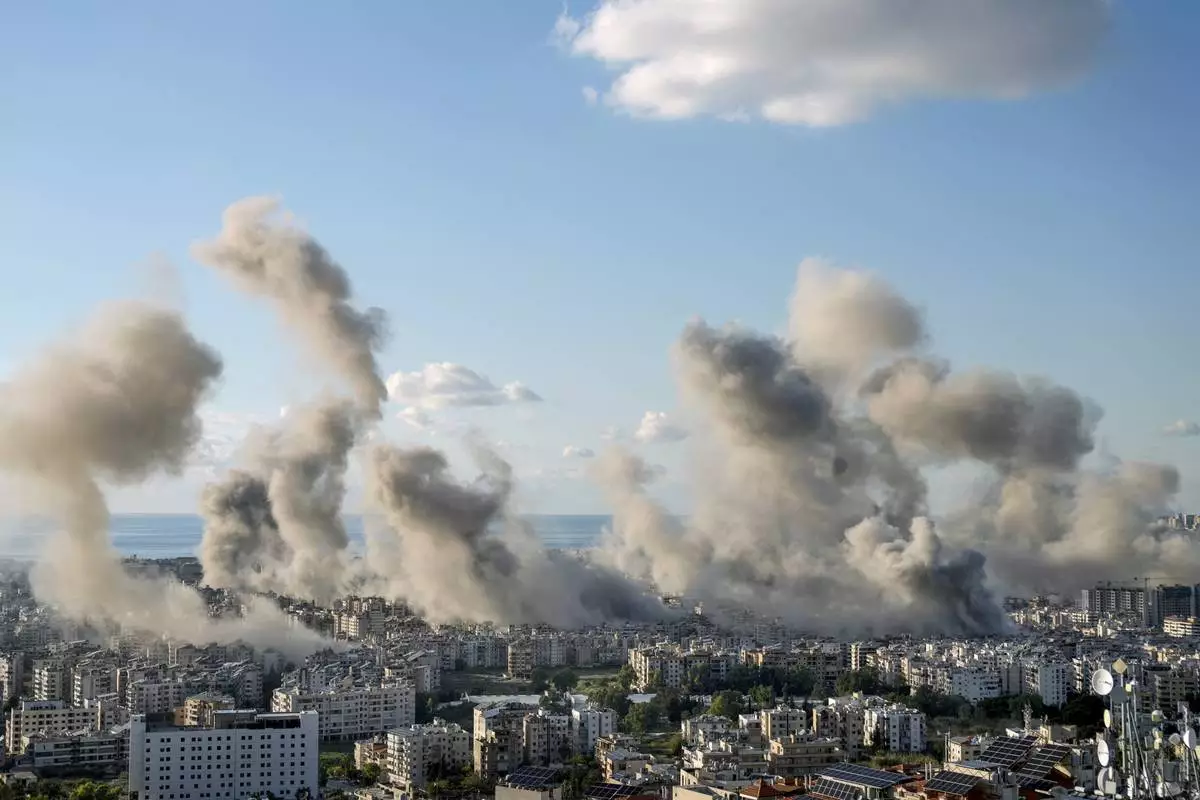
Smoke rises following an Israeli airstrike on Dahiyeh, in Beirut, Lebanon, Tuesday, Nov. 26, 2024. (AP Photo/Bilal Hussein)
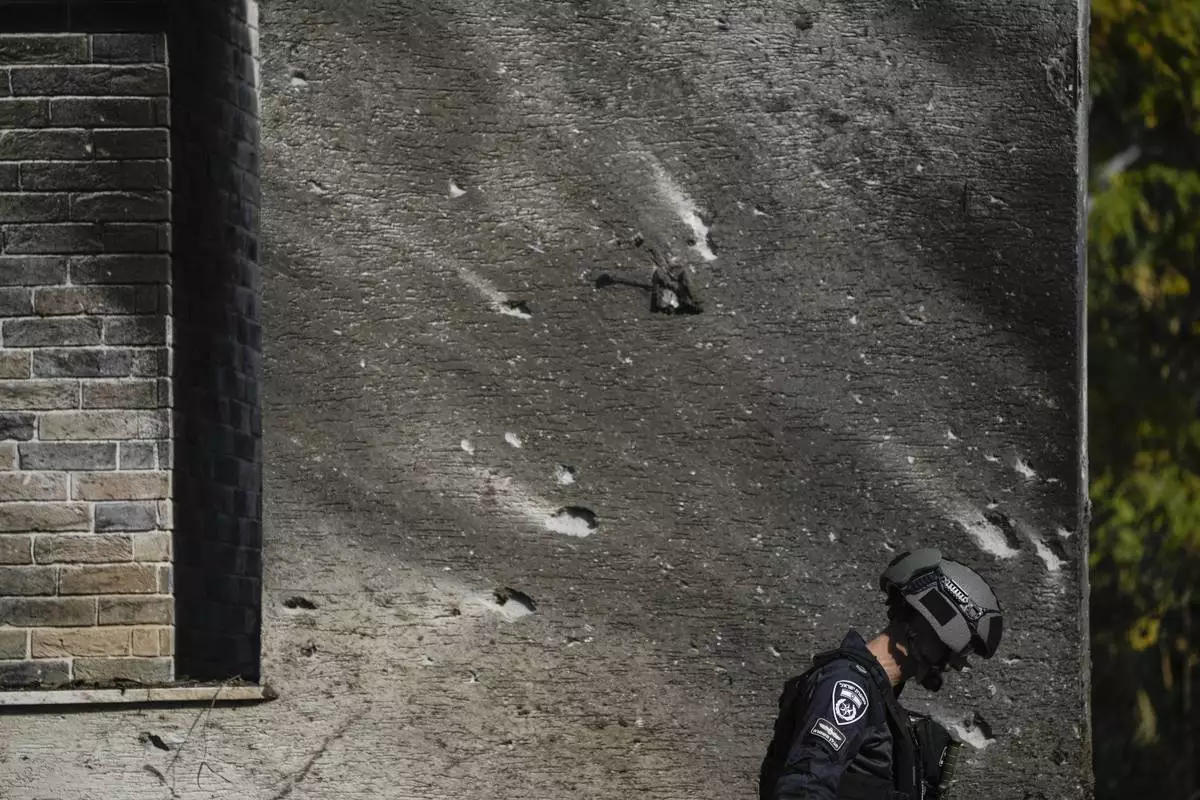
A police bomb squad officer inspects the site where a rocket fired from Lebanon landed in a backyard in Kiryat Shmona, northern Israel, Tuesday Nov. 26, 2024. (AP Photo/Leo Correa)
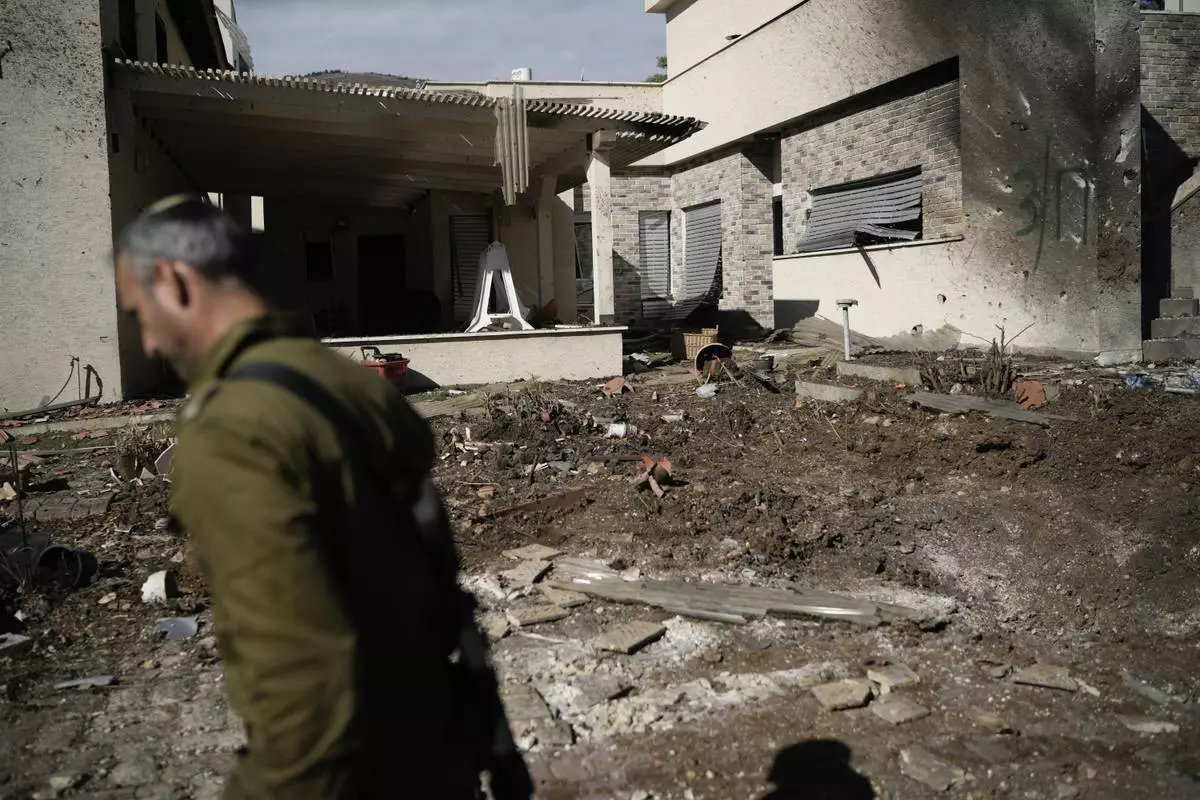
An Israeli soldier inspects the site where a rocket fired from Lebanon landed in a backyard in Kiryat Shmona, northern Israel, Tuesday Nov. 26, 2024. (AP Photo/Leo Correa)
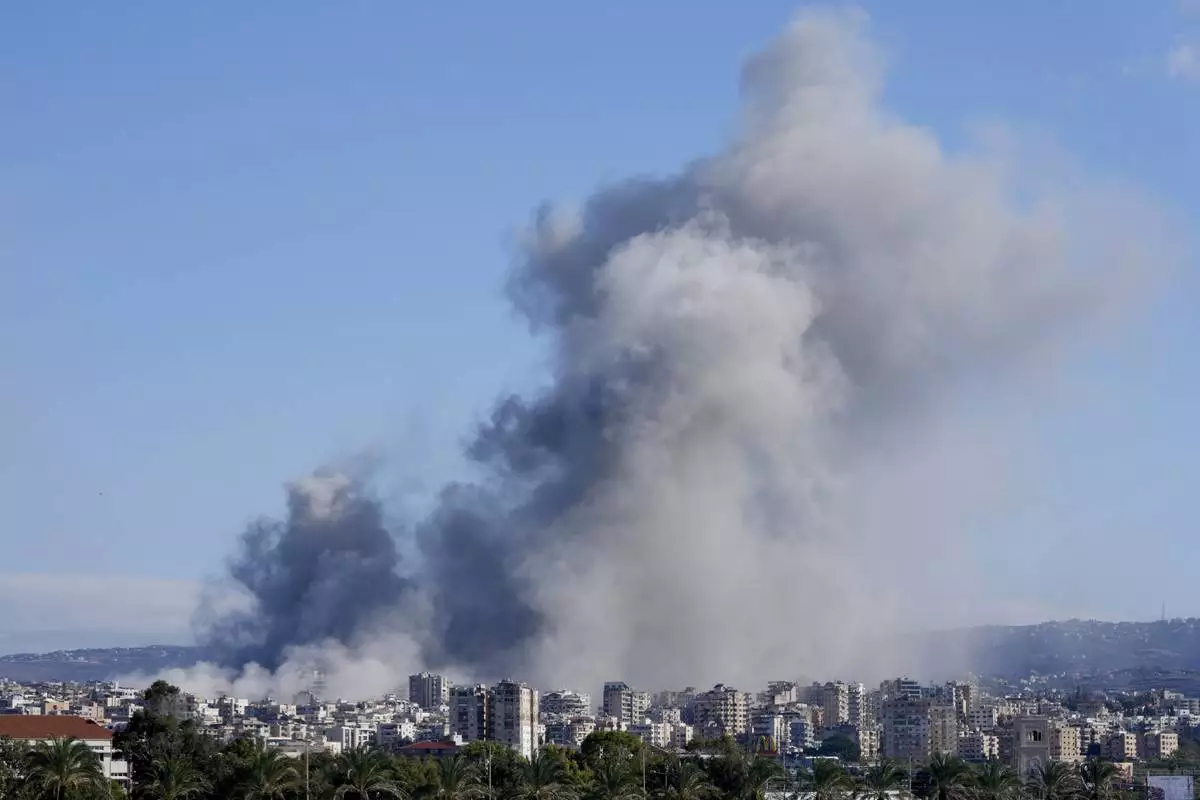
Smoke rises between buildings hit in Israeli airstrikes in Hosh neighbourhood, in Tyre, south Lebanon, Tuesday, Nov. 26, 2024. (AP Photo/Hussein Malla)
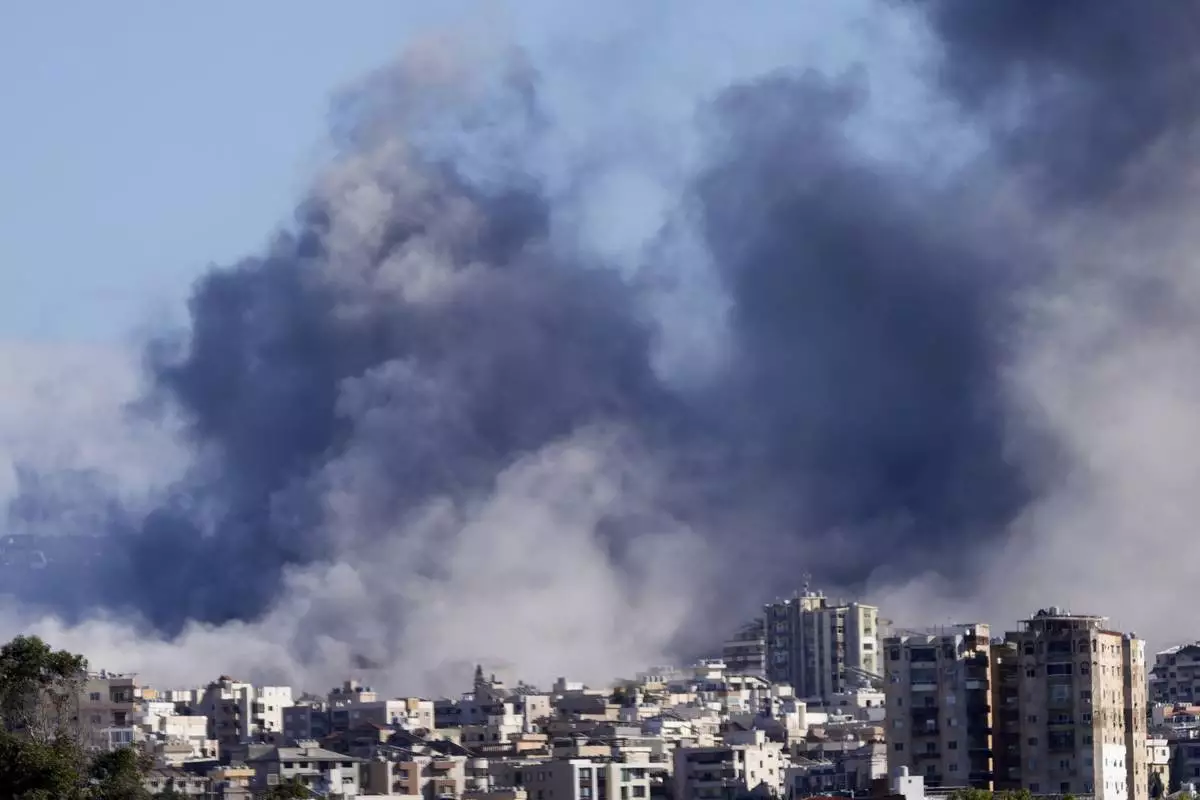
Smoke rises between buildings hit in Israeli airstrikes in Hosh neighbourhood, in Tyre, south Lebanon, Tuesday, Nov. 26, 2024. (AP Photo/Hussein Malla)

Police bomb squad officers collect the pieces of a rocket fired from Lebanon that landed in a backyard in Kiryat Shmona, northern Israel, Tuesday Nov. 26, 2024. (AP Photo/Leo Correa)
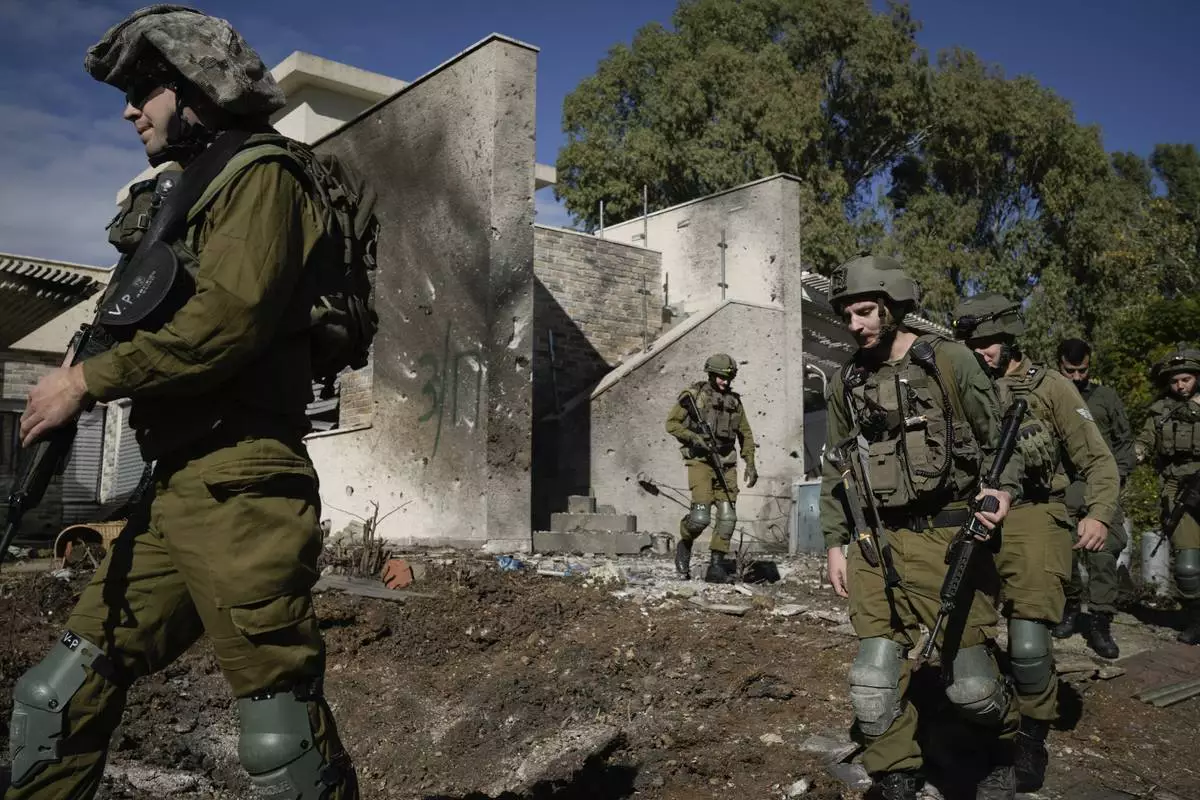
Israeli soldiers inspect the site where a rocket fired from Lebanon landed in a backyard in Kiryat Shmona, northern Israel, Tuesday Nov. 26, 2024. (AP Photo/Leo Correa)
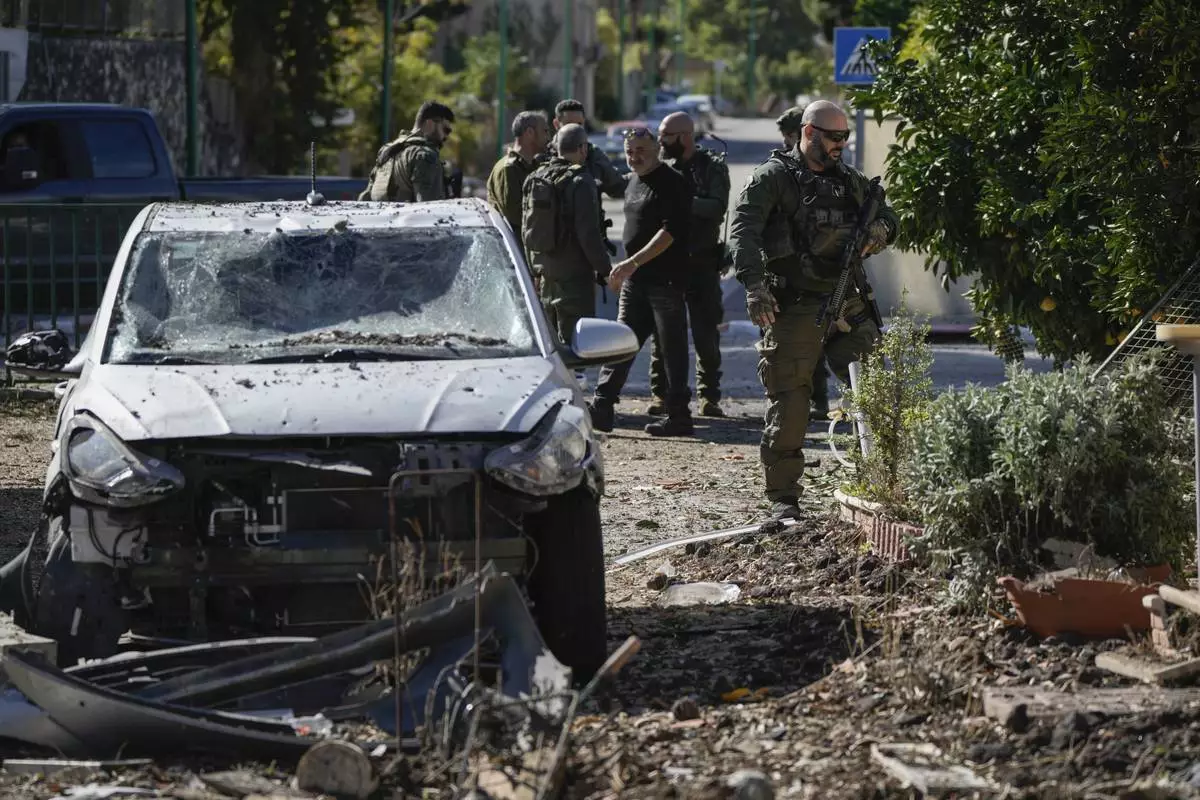
Israeli security officers and army soldiers inspect the site where a rocket fired from Lebanon landed in a backyard in Kiryat Shmona, northern Israel, Tuesday Nov. 26, 2024. (AP Photo/Leo Correa)




